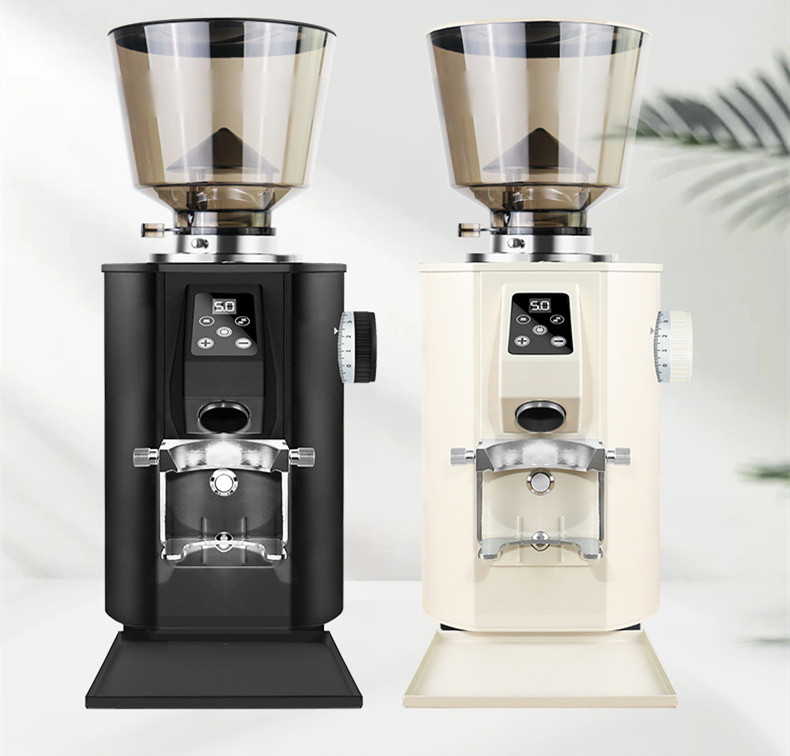Solving Uneven Grinding in Coffee Grinders: Expert Tips for Consistent Results
Uneven grinding—where some coffee particles are too coarse and others too fine—can ruin the extraction process, leading to sour, bitter, or weak-tasting coffee. Whether you’re brewing espresso, pour-over, or French press, addressing grind inconsistency is key to unlocking balanced flavors. Below, explore actionable solutions to common causes of uneven grinding.
Diagnosing the Root Causes of Uneven Grinding
Before fixing the issue, identify what’s causing inconsistent particle sizes. Grinder design, maintenance habits, and bean properties all play a role.
Worn or Dull Burrs
- Impact: Burrs (the grinding discs in conical or flat grinders) lose sharpness over time, crushing beans unevenly. Dull burrs produce more “fines” (tiny particles) and “boulders” (large chunks).
- Signs: Excessive clumping, noisy grinding, or a mix of powdery and chunky grounds.
- Solution: Replace burrs according to the manufacturer’s recommended lifespan (typically every 300–500 lbs of coffee, depending on usage). Regular cleaning can extend their life.
Static Electricity Buildup
- Impact: Dry environments or dark-roasted beans generate static, causing fine particles to stick to the grinder’s chute or burrs instead of falling into the portafilter or grounds bin.
- Signs: Grounds cling to surfaces, creating uneven distribution and messy cleanup.
- Solution: Use a small spray bottle to mist beans lightly with water before grinding (this reduces static). Alternatively, grind beans at room temperature and avoid over-drying them.
Incorrect Grind Settings or Calibration
- Impact: Adjusting the grind size without recalibrating the grinder can lead to misaligned burrs, especially in manual or stepped grinders.
- Signs: Sudden changes in grind texture, even after minor adjustments, or difficulty achieving a consistent setting.
- Solution: Recalibrate the grinder by returning it to its coarsest setting, then slowly tightening until the burrs just touch (a faint grinding sound indicates contact). Reset this as your “zero” point before fine-tuning.
Adjusting Grinding Techniques for Better Consistency
Even with a well-maintained grinder, small tweaks to your process can minimize unevenness.
Pre-Grinding Bean Preparation
- Bean Storage: Keep beans in an airtight container away from light and heat. Stale or oily beans are harder to grind uniformly.
- Bean Temperature: Grind beans at room temperature. Cold beans (from the fridge or freezer) can cause condensation, leading to clumping.
- Single Dosing: Weigh beans individually for each grind session instead of using a hopper. This prevents stale grounds from mixing with fresh ones and ensures precise dosing.
Grinding Speed and Rhythm
- Pulse Grinding: For manual grinders or low-speed models, pulse the grind in short bursts rather than running it continuously. This allows grounds to settle evenly.
- Avoid Overloading: Fill the grinder’s hopper or chamber to no more than 75% capacity. Overcrowding increases friction and heat, which can melt oils and create clumps.
- Tap and Shake: After grinding, gently tap the portafilter or grounds bin to dislodge stuck particles. For espresso, use a distribution tool (like a needle or WDT tool) to level the puck before tamping.
Dose and Distribution for Espresso
- Even Distribution: For espresso, uneven grounds lead to channeling (water bypassing the puck). Use a funnel to pour grounds into the portafilter, then spin or tap the basket to create a flat surface.
- Tamping Consistency: Tamp with 30–40 lbs of pressure (about the weight of a gallon of milk). Uneven tamping can exacerbate grind inconsistencies.
- Adjusting Yield: If shots run too fast (underextraction) or slow (overextraction), tweak the grind size and dose. For example, a 1:2 ratio (18g in, 36g out) should take 25–30 seconds with a fine grind.
Maintaining Your Grinder to Prevent Future Issues
Regular upkeep keeps your grinder running smoothly and reduces the risk of uneven grinding.
Cleaning Burrs and Chutes
- Frequency: Clean burrs every 2–4 weeks, depending on usage. Residual oils and fines can clog the grinder and affect particle size.
- Method: Use a soft brush (like a paintbrush or toothbrush) to remove loose grounds. For deeper cleaning, disassemble removable burrs and soak them in a coffee-specific cleaner. Avoid water on electrical components.
- Chute Maintenance: Wipe the grind chute daily with a dry cloth to prevent clumps. A small brush or canned air can dislodge stuck particles.
Lubricating Moving Parts
- When to Lubricate: If your grinder has metal-on-metal components (like adjustment threads), apply food-grade lubricant annually to prevent stiffness.
- Avoid Over-Lubricating: Excess grease can attract dust and coffee oils, creating a gritty paste that worsens grind consistency.
- Check for Wear: If the grind adjustment knob feels loose or sticks, inspect internal gears for damage. Tighten loose screws or replace worn parts as needed.
Storing Beans Properly
- Airtight Containers: Use opaque, airtight containers to protect beans from oxygen, moisture, and light. Exposure to these elements speeds up staleness and oil degradation.
- Avoid Freezing (Unless Necessary): Freezing beans can cause condensation when thawed, leading to clumping. If you must freeze beans, portion them into small, airtight bags and thaw completely before grinding.
- Rotate Stock: Use older beans first to prevent them from becoming stale. Fresh beans grind more consistently and extract better flavors.
By addressing worn parts, refining your technique, and maintaining your grinder, you can eliminate uneven grinding and enjoy richer, more balanced coffee. Pay attention to subtle changes in grind texture, clean your equipment regularly, and adjust settings based on bean type and brew method. With practice, you’ll achieve professional-level consistency at home.


